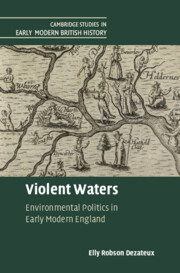Refine search
Actions for selected content:
3388198 results

Challenging the Caliphate
- Wahhabism and Mahdism in the Late Ottoman Empire
- Coming soon
-
- Expected online publication date:
- January 2026
- Print publication:
- 31 January 2026
-
- Book
- Export citation

Violent Waters
- Environmental Politics in Early Modern England
- Coming soon
-
- Expected online publication date:
- January 2026
- Print publication:
- 31 January 2026
-
- Book
- Export citation

Huguenot Networks
- Truth and Secrecy in Sixteenth-Century Europe
- Coming soon
-
- Expected online publication date:
- January 2026
- Print publication:
- 31 January 2026
-
- Book
- Export citation

Entrepreneurial Finance
- The Art and Science of Growing Ventures
- Coming soon
-
- Expected online publication date:
- January 2026
- Print publication:
- 31 January 2026
-
- Textbook
- Export citation

Beyond Grammar and the Lexicon
- Indicating and Depicting in Sign Language Discourse
- Coming soon
-
- Expected online publication date:
- January 2026
- Print publication:
- 31 January 2026
-
- Book
- Export citation
Sex, Genes and Chromosomes
- Their Discovery, Function and Evolution
- Coming soon
-
- Expected online publication date:
- January 2026
- Print publication:
- 31 January 2026
-
- Book
- Export citation

Peasants to Paupers
- Land, Class, and Kinship in Central Kenya
- Coming soon
-
- Expected online publication date:
- January 2026
- Print publication:
- 31 January 2026
-
- Book
- Export citation

Saints as Divine Evidence
- The Hagiological Argument for the Existence of God
- Coming soon
-
- Expected online publication date:
- January 2026
- Print publication:
- 31 January 2026
-
- Book
- Export citation
The Political Writings of Abraham Lincoln
- Coming soon
-
- Expected online publication date:
- January 2026
- Print publication:
- 31 January 2026
-
- Book
- Export citation

Still No Miracles Needed
- How Today's Technology Can Save Our Climate and Clean Our Air
- Coming soon
-
- Expected online publication date:
- January 2026
- Print publication:
- 22 January 2026
-
- Book
- Export citation

Think of England
- Nation, People, and Race in the English Imagination
- Coming soon
-
- Expected online publication date:
- January 2026
- Print publication:
- 31 January 2026
-
- Book
- Export citation

Labor in Hard Times
- Workers' Legal Mobilization at the European Court of Human Rights
- Coming soon
-
- Expected online publication date:
- January 2026
- Print publication:
- 31 January 2026
-
- Book
- Export citation
Geopolitical Union
- Europe's Attempt to Take Back Control of Technology Regulation
- Coming soon
-
- Expected online publication date:
- January 2026
- Print publication:
- 31 January 2026
-
- Book
- Export citation
Semantic Research
- From Data to Analysis
- Coming soon
-
- Expected online publication date:
- January 2026
- Print publication:
- 31 January 2026
-
- Textbook
- Export citation
Leaving Guantanamo
- How One Country Brought its Men Home from the Forever Prison
- Coming soon
-
- Expected online publication date:
- January 2026
- Print publication:
- 31 January 2026
-
- Book
- Export citation

Fundamentals of Biological Psychology
- A Critical Perspective
- Coming soon
-
- Expected online publication date:
- January 2026
- Print publication:
- 31 January 2026
-
- Textbook
- Export citation

Practices of Restitution
- Law and Aesthetics in Modern Germany
- Coming soon
-
- Expected online publication date:
- January 2026
- Print publication:
- 31 January 2026
-
- Book
- Export citation

In the Shadow of the Constitution
- The Micropolitics of Constitutional Contestation in Cambodia
- Coming soon
-
- Expected online publication date:
- January 2026
- Print publication:
- 31 January 2026
-
- Book
- Export citation

Promise the Earth
- A Safe Climate in Good Faith
- Coming soon
-
- Expected online publication date:
- January 2026
- Print publication:
- 31 December 2025
-
- Book
- Export citation

Reading Biblical Greek
- A Graded Reader for Beginners
- Coming soon
-
- Expected online publication date:
- January 2026
- Print publication:
- 31 January 2026
-
- Textbook
- Export citation
